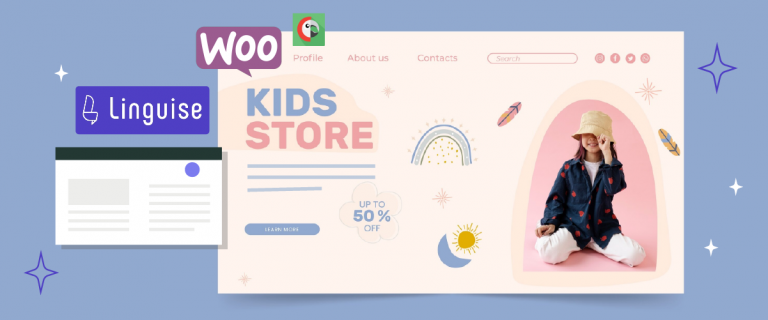Content localization is extremely important as businesses expand their presence across various countries and continents. Adapting digital content to local languages and cultures is essential, going beyond mere translation to include cultural adaptation and maintaining style consistency. A strong content localization strategy is crucial for achieving global success and effectively reaching new audiences. It’s important to note that 40% customer will not to buy products and services in another language. This blog will dive deep into content localization, its importance, types of content that can be localized, and step-by-step strategies for building a successful content localization strategy that takes into account the customer’s language preference.
What is content localization?
Content localization is a crucial component of global success and part of multilingual marketing strategy , as it involves adapting digital content for different languages and cultural contexts, such as websites, apps, marketing materials, and technical documents. To effectively localize content, it is important to go beyond mere translation and make sure that the content resonates with local audiences. Here are some key points to keep in mind as you go through the process of content localization:
- Language translation: The first step in content localization is to translate the content into the target language. This involves not only translating the words themselves, but also ensuring that the tone and style of the content are appropriate for the target audience.
- Cultural adaptation: In addition to language translation, it is important to make cultural adaptations to the content. This may involve changing images or graphics to better reflect local customs and traditions, or altering references to specific cultural events or holidays.
- Following style guides: To ensure consistency across all localized content, it is important to follow style guides that dictate things like formatting, tone, and voice. This helps to maintain a cohesive brand identity and ensures that the content is consistent across all markets.
- Testing and feedback: Once the localized content is complete, it is important to test it with local audiences to ensure that it resonates with them. This may involve focus groups or surveys to gather feedback on the effectiveness of the content and make any necessary adjustments.
The importance of a content localization strategy
Providing content in the local language can improve customer experience and foster stronger connections with the intended audience. Moreover, content localization can help companies increase their market share in foreign markets, expanding their potential customer base.
A well-defined content localization strategy allows businesses to attract and engage potential customers in different countries. It can also enhance brand recognition and loyalty by showing that the business values its customers’ cultural backgrounds and language preferences. Localizing content can involve adapting it to fit regional nuances, such as idiomatic expressions or cultural references, making it more relatable and relevant to the target audience.
Content localization benefits extend beyond language adaptation and include researching local market trends, consumer behavior, SEO techniques, and social media platforms in the target region.
Types of content for localization
Various types of content can benefit from localization efforts. Some of the key types of content that businesses should consider localizing include web content, mobile content, marketing materials, and technical documents. Each of these types of content requires a different approach to localization, considering specific considerations such as search engine optimization, user experience, target market, and cultural differences. A comprehensive content localization strategy should cover all these types of content to ensure a consistent and impactful customer experience across different markets.
Web Content Localization
Web content localization is a crucial component of any content localization strategy. It involves adapting digital content to different languages, cultures, and target markets. The process for web content localization encompasses several steps: translation, cultural adaptation, and consistent localization style and design.
We recommend to use automatic translation tools for localization, which can streamline the process and ensure efficient localization efforts. It’s important to use the right tools to create web content that appeals to a global audience and attracts customers. Here are some advantages:
- Rapid Content Translation: Automatic translation tools can swiftly translate large volumes of web content into multiple languages, reducing the time required to enter new markets.
- Cost Efficiency: Automating the initial translation process allows companies to save on costs associated with traditional translation methods, which often require significant human resources.
- Optimize SEO: This helps increase visibility and reach in local search engines. Businesses can attract local audiences and drive organic website traffic by optimizing web content for different languages.
Marketing content localization
Marketing localization is essential to engage with target markets worldwide effectively. It involves adapting marketing materials for different languages and cultural contexts, such as advertisements, brochures, and social media posts. To ensure maximum impact, localization efforts in marketing content should consider cultural differences, local market trends, and customer preferences. Here are some key points to keep in mind when localizing marketing content:
- Cultural differences: Localization should consider cultural norms, values, and sensitivities to resonate with local audiences.
- Local experts: Collaborating with local experts and translators ensures accurate translations and cultural adaptation.
- Social media: Social media platforms play a significant role in marketing content localization, as they allow businesses to engage with local audiences in real time.
- Target market: A deep understanding of target markets is crucial to tailor marketing content localization efforts to different audiences’ specific needs and preferences.
Technical content localization
Technical content localization involves translating and adapting technical documents, user guides, and support materials for different languages and target markets. This type of content localization requires a high level of accuracy, as technical content often includes industry-specific terminology and precise instructions. To ensure effective technical content localization, businesses should consider the following:
- Translation process: Collaborate with native speakers and professional translators who are familiar with the subject matter to ensure accurate translation.
- Style guides: Maintain style consistency across different languages by developing and following style guides specific to each language.
- Native speakers: Involving native speakers in the localization process can provide valuable insights and ensure linguistic accuracy.
- Localization tools: Utilize content localization software, translation management systems, and other tools to streamline the localization process and improve efficiency.
Building your content localization strategy
A well-defined content localization strategy guides businesses in effectively targeting different markets, ensuring cultural adaptation, and maintaining style consistency. To build a successful content localization strategy, companies should consider factors such as identifying target markets, regional expansion based on specific areas, deciding on the content to localize, and choosing the right content for localization. Here are the key steps that you can follow:
Identifying your target markets and languages
Before jumping in on content localization efforts, it is essential to identify target markets and languages. This step provides a solid foundation for content localization strategy and ensures that efforts are directed towards the right markets. Consider the following points when identifying target markets and languages:
- Different languages: Determine which most languages are spoken in the target markets and prioritize localization efforts accordingly.
- Local audience: Understand the preferences, cultural norms, and needs of the local audience to tailor content localization strategy effectively.
- Market research: Conduct thorough market research to gain insights into potential customers, market trends, and cultural sensitivities in different countries.
- Market potential: Assess market potential in different countries based on your data, and factors such as customer demand, competition, and market share.
- New customers: Consider the potential customer base in different markets and how content localization can help attract and engage new customers.
Decide which content needs adjusting for specific locations
When it comes to content localization, local experts are key players in shaping the strategy for successful global outreach. Take, for example, a company looking to expand its target market into a new region. By consulting with local experts, they can gain valuable insights into the cultural nuances and preferences of that market. This information can then be used to guide the content localization strategy, ensuring that the content resonates with the target audience and achieves the desired impact.
Another important consideration when it comes to content localization is identifying which existing content is a good fit for translation. For instance, a company with a successful blog in one market may want to localize that content for another market. However, not every piece of content will be suitable for translation. By carefully reviewing and selecting the right content, businesses can save time and resources while still achieving their global outreach goals.
Choosing the right content
Choosing the right content for localization is vital for a successful content localization strategy. It includes evaluating different content types, such as blog posts, videos, infographics, and social media posts, to determine their potential impact in different markets. Consider the following points when choosing content for localization:
- Content marketing strategy: Align content localization efforts with content marketing strategy, ensuring that the selected content supports marketing objectives and target audience engagement.
- Different markets: Evaluate the potential of different types of content in resonating with local audiences in different markets.
- Localization efforts: Prioritize content types that can be effectively localized, such as textual content, multimedia materials, and interactive content.
- Market research: Gain insights into target audience preferences, content consumption habits, and content formats that are popular in different markets.
- Target audience: Select content types that cater to the specific interests and needs of the target audience, aiming to deliver content in their own language and preferred format.
Decide which content to adapt for different locations.
It’s important to understand the preferred language of your target audience, but it’s equally important to review your content to determine what needs to be localized. For example, a company selling winter clothing may need to adapt their product descriptions and images to suit the different climates and cultures of their global audience. However, simply adapting content is not enough for quality localization. Working with localization experts and collaborating with native speakers can ensure accuracy and cultural sensitivity.
Show up in regional search engines
Content localization is more than just translating your content into the local language; you also need to adjust your international keyword strategies. This includes adapting it to suit local customs, markets, and competition. For instance, if you are a fashion retailer expanding into the Japanese market, you need to translate your website and product descriptions into Japanese and align your content with local fashion trends and styles.
It’s essential to use relevant local keywords and phrases to optimize your content for local search engines. However, it is equally important to understand the cultural context and nuances behind those terms. This requires research and an in-depth understanding of the target audience’s preferences, values, beliefs, and behaviors.
Effective practices for content localization
To ensure successful content localization, businesses should follow certain best practices. These practices focus on research, cultural sensitivities, and utilizing local experts and tools to improve the localization process. By adhering to these practices, businesses can achieve a higher level of accuracy, cultural adaptation, and overall effectiveness in their content localization efforts.
Importance of Research in Your Target Market
Research is an important role in successful content localization efforts. Thorough market research helps businesses understand the cultural sensitivities, preferences, and unique needs of different target markets. This knowledge enables businesses to tailor their content localization strategy, ensuring that their content resonates with local audiences effectively. The importance of research in content localization includes the following:
- Market research: Conduct market research to gain insights into target market demographics, cultural norms, and local language preferences.
- Target market analysis: Analyze market potential, competition, and customer behavior in different markets to identify localization opportunities and challenges.
- Cultural sensitivities: Understand and respect cultural differences, taboos, and sensitivities to avoid content localization mishaps that could potentially harm the brand reputation.
- Customer preferences: Determine customer preferences, content consumption habits, and language preferences in specific markets to create content that appeals to local audiences.
- Content optimization: Utilize market research findings to optimize content for local audiences, adapting style, tone, and content structure to resonate with target market customers.
Focusing on localizing content for user journey phases
Prioritizing content localization efforts based on important user journey stages ensures a cohesive and impactful customer experience. This approach focuses on localizing content at each touchpoint of the customer journey to maximize customer engagement and conversion rates. Here are key considerations when prioritizing content localization efforts for important user journey stages:
- Customer journey mapping: Map out the customer journey, identifying key touchpoints where content localization can make a significant impact.
- Localization process: Incorporate content localization efforts into important user journey stages, ensuring that content is adapted to local languages, cultural norms, and customer preferences.
- Customer experience optimization: Tailor localized content to support customers’ needs, expectations, and decision-making process at different stages of the customer journey.
- Localization strategy alignment: Align content localization efforts with customer journey mapping, ensuring that each localized content piece serves a specific purpose and enhances the customer experience.
- Continuous optimization: Regularly assess the impact of content localization efforts on important user journey stages, making adjustments based on customer feedback, performance metrics, and localization best practices.
Localize media
Localizing media content is crucial for reaching and engaging local audiences effectively. From marketing materials to videos and advertisements, localizing media content helps businesses create a connection with target markets. Here are key points to remember when localizing media content:
- Marketing content: Adapt marketing materials, including images, graphics, and videos, to align with local cultural norms, preferences, and customer expectations.
- New audience: Tailor media content to the local audience’s language, aesthetics, and cultural specifics, ensuring relevance and impact.
- Cultural norms: Consider cultural differences, social practices, and sensitivities, modifying media content to resonate with local audiences effectively.
- Localization tools: Utilize localization tools and services specialized in media content localization, ensuring accurate translation, cultural adaptation, and style consistency.
- Visual elements: Adapt images, graphics, and visual elements to suit local preferences, avoiding cultural misinterpretation and promoting better audience engagement.
Continue testing
Testing is a critical step in content localization efforts, ensuring the effectiveness, accuracy, and optimization of localized content. Rigorous testing allows businesses to identify and address potential issues, refine localization strategy, and improve market share. Here are key considerations when it comes to testing in content localization:
- Best practices: Follow best practices for content localization testing, including translation testing, functional testing, cultural review, and user experience testing.
- Localization efforts evaluation: Evaluate content localization efforts at different stages, considering customer feedback, performance metrics, market share, and customer satisfaction.
- Continuous improvement: Make iterative adjustments based on test results, addressing localization challenges, and refining content localization strategy for better results.
- Market-specific optimization: Test the effectiveness of localized content in different markets, adjusting localization efforts to optimize content for each target market.
- Quality assurance: Ensure that all localized content undergoes thorough quality assurance testing, including linguistic checks, cultural review, and functional testing.
Key indicators of successful content localization
After implementing content localization efforts, it is essential to measure their success to assess the impact of localization strategy, content optimization, and customer engagement. Effective measurements help businesses understand the return on investment, identify areas of improvement, and adjust content localization strategy accordingly. Here are key indicators of successful content localization:
- Performance metrics: Set performance metrics, such as website traffic, conversion rates, customer feedback, and social media engagement, to track the impact of content localization efforts.
- Market share: Monitor changes in market share, customer acquisition, and customer retention in different markets to evaluate the success of content localization in targeted regions.
- Localization efforts: Assess the effectiveness of content localization efforts, including accuracy of translations, cultural adaptation, style consistency, audience engagement, and customer satisfaction.
- Local search engine optimization: Monitor improvements in local search engine rankings, organic search traffic, and visibility in local search results, indicating the success of localized content in reaching target audiences.
- Localization strategy impact: Evaluate the impact of content localization strategy on customer experience, customer journey optimization, and customer satisfaction, taking into account feedback, reviews, and customer support interactions.
Ready to implement content localization strategy?
Expanding global business presence requires the localization of websites to cater to international audiences. Displaying websites in multiple languages is essential for reaching new markets, engaging customers, and enhancing customer experience. Localizing websites allows businesses to tap into the global market, target international customers, and gain a competitive edge. A solid digital content localization strategy, utilizing localization tools, and working with native speakers are key to successfully displaying websites in multiple languages.
Start with website localization, try Linguise for your automatic translation, and explore the advantages!
- Live Editing of Translations: Once Linguise is integrated, your website content is automatically translated. If some translations don’t seem right, Linguise’s live editor feature allows for on-the-spot adjustments, ensuring that your content resonates accurately with the local audience.
- Integrated with 40+ popular CMS: No matter your website’s platform, we’ve integrated with your platform, ensuring easy integration in just a few steps.
- Translation Customization: You can manually edit and customize translations and exclude specific content from translation, allowing for control over how your content is presented in different languages. This feature is particularly useful for addressing any nuances or industry-specific terminology and specific keywords or phrases don’t require translation.
- High-Quality Translations: Utilizing advanced AI translation technology, Linguise provides high-quality translations that capture nuances and context more accurately than traditional automatic translation tools.
- Effortless Multilingual SEO: You don’t have to worry about the optimization of multilingual SEO; it’s already handled. By ensuring your website is fully optimized for search engines in each language, Linguise enhances your online visibility and reach across diverse markets.




